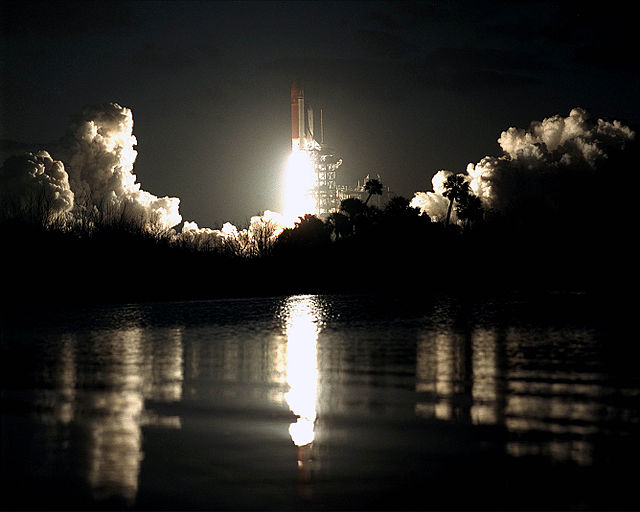Getaway Special was a NASA program that offered interested individuals, or groups, opportunities to fly small experiments aboard the Space Shuttle. Over the 20-year history of the program, over 170 individual missions were flown. The program, which was officially known as the Small, Self-Contained Payloads program, was canceled following the Space Shuttle Columbia disaster on February 1, 2003.
Two Getaway Special (GAS) canisters, used on STS-91
GAS canisters shown mounted in the Space Shuttle Discovery cargo bay. This image is from STS-91. The front of the Shuttle is to the left of the picture.
STS-61-C was the 24th mission of NASA's Space Shuttle program, and the seventh mission of Space Shuttle Columbia. It was the first time that Columbia, the first space-rated Space Shuttle orbiter to be constructed, had flown since STS-9. The mission launched from Florida's Kennedy Space Center on January 12, 1986, and landed six days later on January 18, 1986. STS-61-C's seven-person crew included the first Costa Rican-born astronaut, Franklin Chang-Díaz, and 2 future Administrators of NASA: the second African-American shuttle pilot, Charles Bolden, and the second sitting politician to fly in space, Representative Bill Nelson (D-FL). It was the last shuttle mission before the Space Shuttle Challenger disaster, which occurred ten days after STS-61-C's landing.
Satcom-K1 is deployed from Columbia's payload bay.
Back row: Bill Nelson, Steven Hawley, George Nelson, Front row: Robert J. Cenker, Charles Bolden, Robert L. Gibson, Franklin Chang-DíazSpace Shuttle program← STS-61-B (23)STS-51-L (25) →
Launch of STS-61-C
STS-61-C landing






